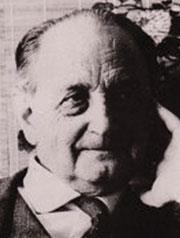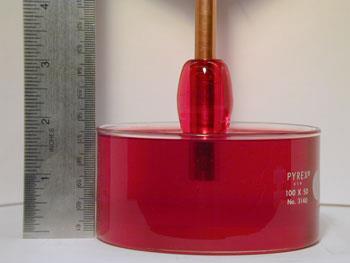In so many societies, bread is the stuff of life the cornerstone of existence
In so many societies, bread is the stuff of life, the cornerstone of existence. One need look no further than Egypt, where the word for life - aish - doubles as the word for bread, to see the critical role it plays in daily life. You mess with the price and quality of bread at your peril.
Yet for all its importance, baking bread is something that we mostly outsource to specialists; few of us take the opportunity to make it ourselves.
For a chemist, it’s an enthralling process. Thanks in part to Louis Pasteur, most of us have a simple understanding of fermentation, responsible for the foamy emptiness of a successfully leavened loaf. But the mystery deepens when we start kneading. It is a minuet for the hands - heel, turn, fold - a meditative process that takes you from a sticky, crumbly mess to the smooth and elastic mass that some bakers know as ’baby’s bottom’. For the impatient, or the techie, a kitchen mixer with a dough hook will do. And then comes the weird part - as the dough spins round it often rises up the hook in an infuriating and messy fashion. Had I been trained as a rheologist, I might have recognised it as the Weissenberg effect, a name I had only heard of in a very different context.

Karl Weissenberg was born in Vienna, Austria, in 1893. As a child his parents lived in Austria, Germany and France, and the young Karl moved from one school to the next. Although he matriculated at the University of Frankfurt at the age of 16, he studied in Jena, Berlin and Vienna. His degree was in mathematics but with sidelines in chemistry and physics, as well as forays into medicine and law. His PhD, on hypercomplex algebra, soon led to him becoming a privatdozent (an unsalaried lecturer) and then professor in the prestigious Berlin-Dahlem University. Weissenberg began studying x-rays, exploring the mathematics of crystal symmetry, and applying both to a wide variety of problems including the structures of metals, analysis of fibres, and the structure of Moses Gomberg’s mysterious triphenylmethyl radical, problems that combined his flair for both maths and experiment.
These were the heroic days in crystallography, when everything was to play for. A key challenge was to index diffraction patterns, the crucial first step in determining a structure. With the standard geometry in which the crystal was rotated around an axis normal to the x-ray beam, the diffraction pattern had been shown by German physicist Max von Laue more than a decade before to consist of a series of discontinuous cones corresponding to one of the three internal coordinates of the crystal. With a flat piece of film perpendicular to the beam, spots corresponding to the other two directions overlapped - though beautiful, the patterns were almost impossible to index.
In 1924, with a sudden leap of mathematical - yet profoundly practical - inspiration, Weissenberg found an answer. The crystal being studied would be shrouded by a cylindrical metal shield with a slit positioned only to allow reflections from a single diffraction cone to reach the film - now wrapped round the outside. Rotating the film and the crystal together, the spots associated with the remaining two directions were spread out in a series of clear lines or curves, providing a clear (if distorted) representation of reciprocal space.

Yet few noticed the paper. In London two years later, John Bernal developed the oscillation photograph, a method more cumbersome and less direct. Only later did the precession photograph remove all distortion and supersede them both.
But Weissenberg was also thinking about viscous flow, and in particular the mathematics of non-Newtonian fluids. As Germany plunged ever more decisively toward war, he gave up his position and became itinerant once more, teaching at the Sorbonne in Paris and then at Southampton in the UK. In 1940 he joined the British Cotton Research Association’s Shirley Institute in Manchester, whilst also a consultant to the Petroleum Warfare Unit in London. There he advised on the flow properties of incendiaries, and predicted the peculiar rod-climbing behaviour of certain fluids, an effect that was at first named after the actress and sex bomb Mae West. He developed a rheogoniometer to measure stresses and strains in situ, and his dimensionless Weissenberg number provides a means of quantifying viscoelasticity.
Weissenberg was a remarkable man, whose brilliant and wide-ranging curiosity opened up crystallography. He also brought non-Newtonian behaviour into the centre of rheology. But for the man in the street, he developed methods that would make it possible to understand the scientific profundities of bread. And if today people decry the waning quality of bread, surely that has little to do with science, and everything to do with politics, economics and finance.
Andrea Sella teaches chemistry at University College London, UK
Acknowledgements
I am grateful to Derek Tocher and Jeremy Cockcroft for contributions
References
K Weissenberg, Z. Phys., 1924, 23, 229 (DOI: 10.1007/BF01327586)












No comments yet